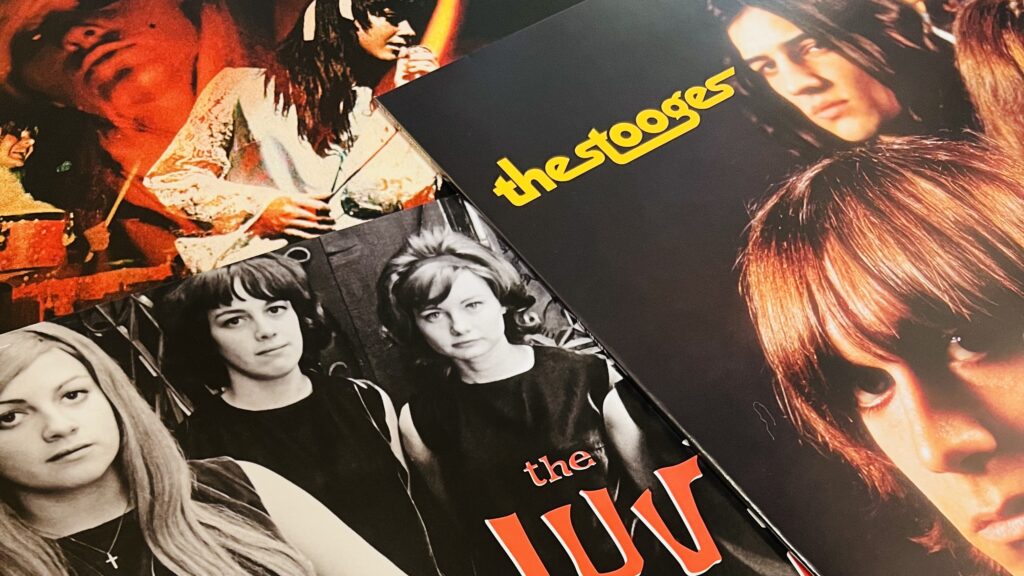
Our survey of American garage rock comes to an end as we reach the great state of Michigan. Throughout the sixties, the Wolverine State was home to one of the nation’s most active garage scenes. Michigan bands often reflected the working class mentality of the state’s residents, largely foregoing the trendiest accoutrements of rock groups from elsewhere in America, and displaying a penchant for the gritty basics.
This “no-frills” mindset was complemented with ample volume, and this combination gave Michigan bands an air of aggression – one that generally surpassed that of their Upper Midwest brethren. While plenty of valid claims can be made for punk rock having emerged in either Texas or the Pacific Northwest, Michigan warrants some consideration as well. If nothing else, a handful of Michigan bands had unquestionably crossed the threshold from rock to punk by the end of the sixties.
Unsurprisingly, many of these bands either hailed from, or first found success in the city of Detroit. Of course, the Motor City had already established itself as the epicenter of contemporary American rhythm and blues by the early part of the sixties, but its reputation as one of the nation’s premier rock cities was on the rise throughout the decade – a reputation bolstered by a plethora of influential bands, record labels, and radio stations. By the end of the sixties, Detroit had matched – if not surpassed – Chicago as the rock mecca of the American Midwest.
Still, garage bands emerged from the Michigan suburbs, small towns, and places further afield with a frequency seen in few other states. Many followed Detroit’s raucous lead, but some of these bands could jangle and mope with the best of American garage groups from coast-to-coast. As was the case elsewhere, there was no single template that Michigan garage bands followed, and the thirty songs chosen for this feature aim to highlight the diverse sounds of the state.
Our final Spotify playlist of this series is par for the course; sixteen songs from the list are currently available on the platform. As always, all thirty of them can be found on the YouTube program linked below. Thanks for reading, and enjoy!
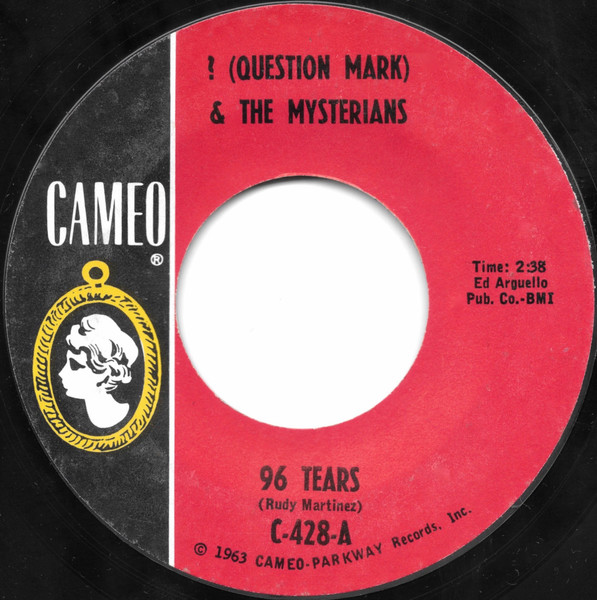
It’s not the earliest song on this list, but “96 Tears” is the song that put the Michigan garage scene on the map. With a pair of irresistible riffs from Frank Rodriguez’s Vox Continental organ, the track rocketed to the top of the Billboard charts in the fall of 1966. Unsurprisingly, the Saginaw-based Question Mark & The Mysterians would never again match the success of “96 Tears,” but it was more than enough to make them garage rock legends.
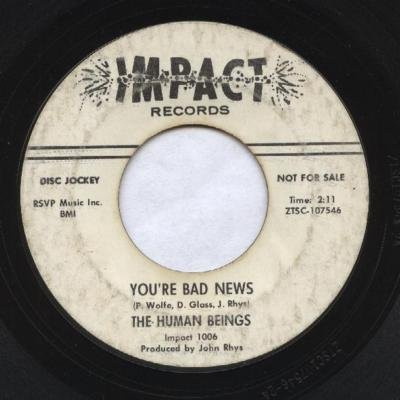
Borrowing a riff similar to that of any number of Rolling Stones songs (I’m hearing “19th Nervous Breakdown” on my current listen), “You’re Bad News” is the highlight of the four-single catalog from Detroit’s The Human Beings. A stomping beat, solid group harmonies, and (especially) that riff helped to make it a memorable entry in the Michigan garage sweepstakes.
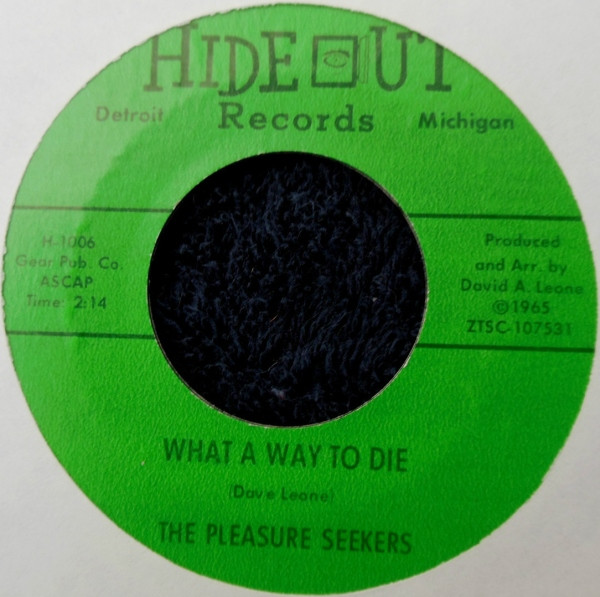
Largely remembered as the group that launched the career of Suzi Quatro, The Pleasure Seekers were among the relatively few all-female bands of the garage rock era. They were also among the earliest – making them pioneers in a male-dominated field. “What a Way to Die” is a ripping track, every bit as kinetic as its attention-grabbing title suggests.
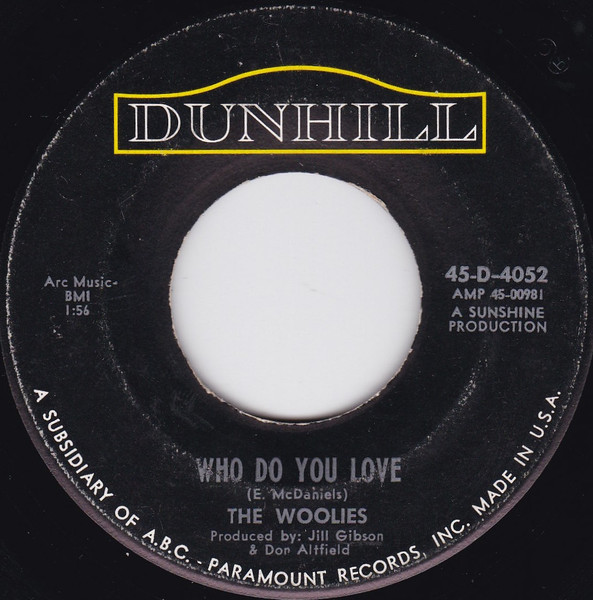
The Woolies released several singles prior to issuing a debut LP, Basic Rock, in 1970. Owing to its appearance on several garage rock compilations, the band’s 1966 version of Bo Diddley’s “Who Do You Love” stands as the East Lansing group’s best-known recording. It’s a fun, spirited garage rock update of a genuine rhythm and blues classic.
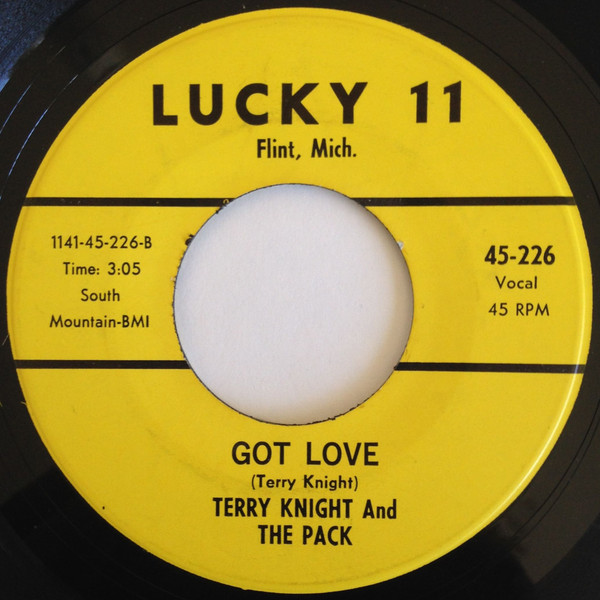
Terry Knight and The Pack included future members of Grand Funk Railroad (for more information on Grand Funk, consult your school library), but it was the Flint band’s namesake who commanded the spotlight during their brief run – which included a pair of LPs. “Got Love” is among their most evocative takes on the blues, and a definite highlight from their 1966 self-titled debut.

Releasing just one single (before changing their name to Attack for one more), St. Clair Shores’ The Illusions live on in garage legend, largely due to their lone B-side. “City of People” has become a staple of garage compilations, and its insistent vocal delivery and ample proto-punk attitude make it a riveting listen, decades down the road.
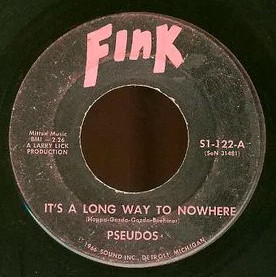
Hailing from Utica, The Pseudos were another one of Michigan’s premier one-single-wonders. Released on the Detroit-based Fink label, “It’s a Long Way to Nowhere” is a swaggering, Stones-esque take on the blues. It’s simple in both composition and intent, but effective nonetheless.
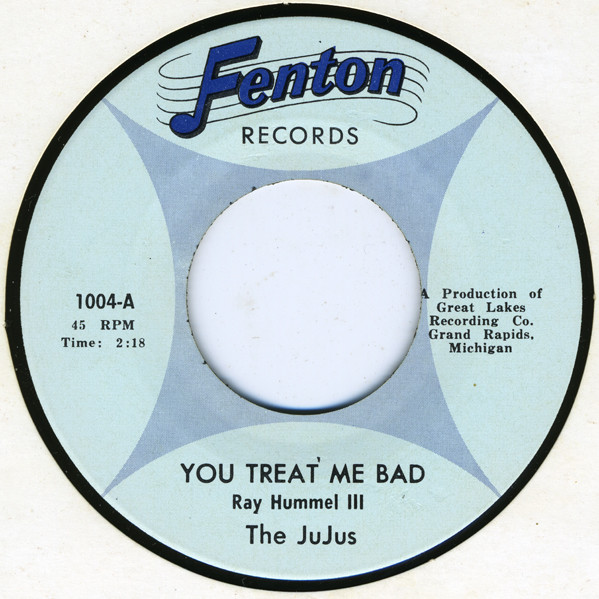
Taking things in a moodier direction, the debut A-side from Grand Rapids’ The Jujus – their first of three singles – is a downcast minor classic. Every young garage rocker opens up a new world of possibilities when they first stumble upon the Em-C-D chord progression – myself included – but rarely are the results as effective as they are on “You Treat Me Bad.”
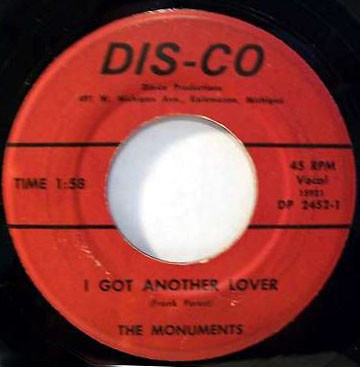
Our melancholy turn continues with this atmospheric track from The Monuments. Released as the B-side to the band’s only single – little info on the group can be found online, but their Dis-Co label was based in Kalamazoo – “You’ll Find the Way” captures the despondence of young heartache, without toppling over into maudlin territory.
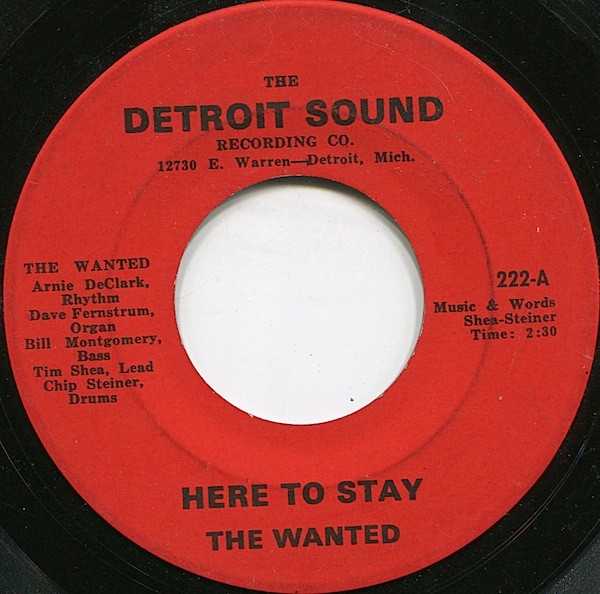
Bucking the trend of the heavy Detroit garage band, The Wanted make an equally strong first impression with the dark and dour “Here to Stay.” The minimalist arrangement is accentuated first by an ethereal organ, but it gains additional depth with wordless backing vocals and a delicately brittle guitar solo.
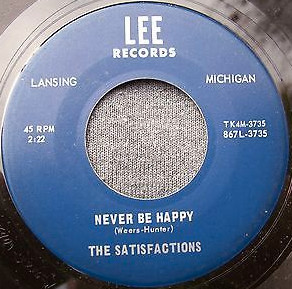
More from the sad-sack garage file. I’m not sure if it was clever, ironic, or accidental that the lone single from a band called The Satisfactions is titled “Never Be Happy,” but the Midland, Michigan group effectively taps into a sense of malaise on this track.
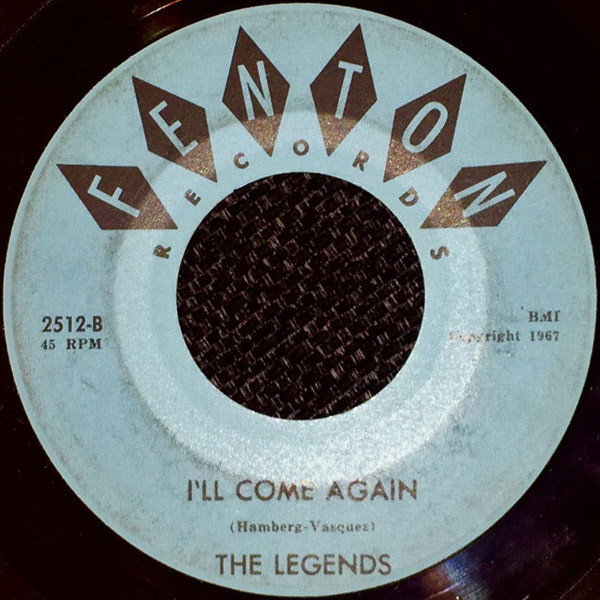
It’s a bit audacious for any band to name themselves The Legends, especially a relatively humble group from Holland, Michigan. Nevertheless, it’s not hard to imagine “I’ll Come Again” – the B-side of the band’s second-and-final single – attaining a somewhat legendary status among garage rock collectors, with its prominent organ and soaring backing vocals.
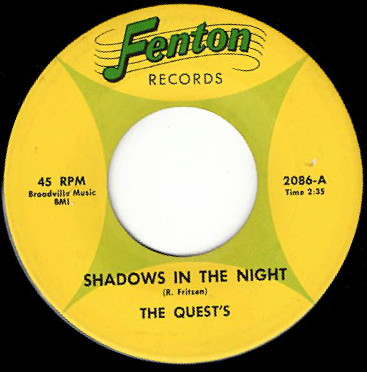
Released twice by the same Fenton Records label – with different B-sides – “Shadows in the Night” stands among the finest Michigan garage singles. The Grand Rapids-based The Quest’s only issued a total of five songs, but this track alone – highlighted by its mix of punk energy and Brian Wilson-esque falsetto vocals – is enough to build a solid legacy.

Quite possibly the most-revered all-female band of the garage rock era, Niles, Michigan’s The Luv’d Ones were the brainchild of Char Vinnedge. Along with her sister Chris and a pair of friends, Vinnedge penned the majority of the band’s material, including the four singles that they released in 1966. The Vietnam-inspired “Dance Kid Dance” is their most immediately-rewarding track, but their entire catalog – which I wrote about in this piece – offers plenty more worth checking out.
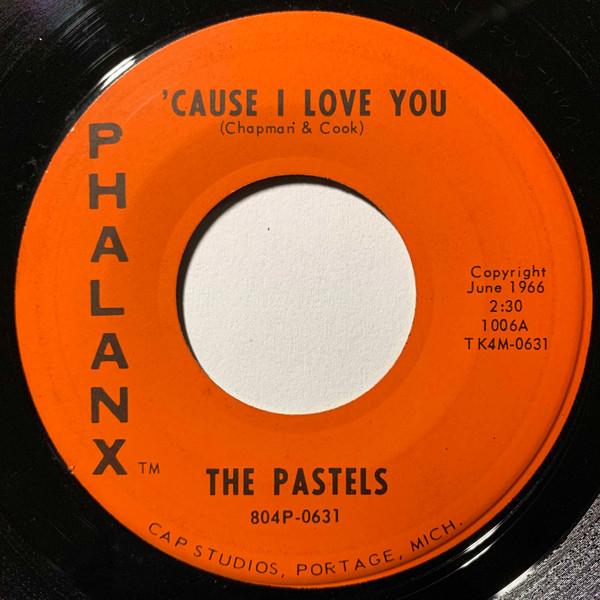
The watery guitars of “‘Cause I Love You” may signal that we’re entering the psychedelic portion of the program, but the psych elements are largely downplayed in this track from Battle Creek’s The Pastels. The group would release just this one single, but it stands among the most evocative examples of Michigan garage rock.
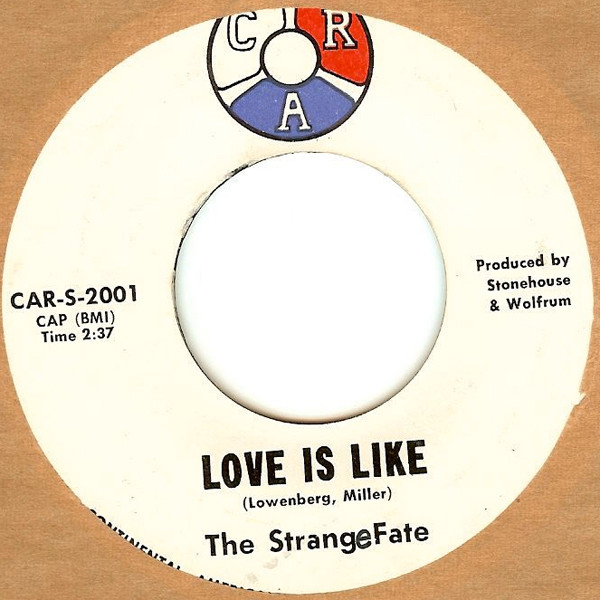
Another impressive one-off that teeters on the line between garage and psych, “Love Is Like” is a deceptively complex composition and recording from Detroit’s The Strange Fate. Conjuring a surprisingly vivid soundscape, the track may lack the immediacy of some of the more visceral pieces on this feature, but it’s among the most rewarding.
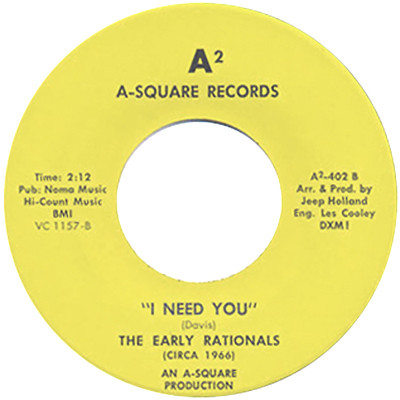
Somewhat confusingly, the relatively-limited catalog of Ann Arbor’s The Rationals contains two different songs called “I Need You.” This one – apparently recorded in 1965, but unreleased for two years – is a solid cover of a jagged early Kinks gem. In Ray Davies’ hands, “I Need You” comes off as a quickly-tossed-together raver, caught between bigger-and-better things. Here, it’s given a deeper sense of urgency, and arguably surpasses the original.
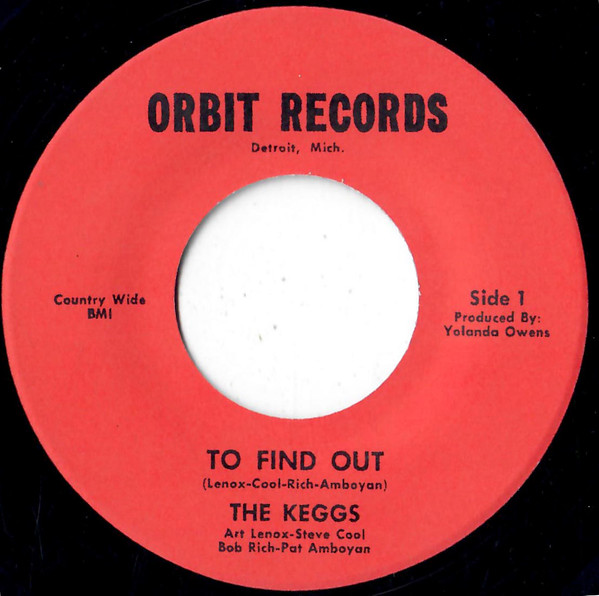
Depending on perspective, Detroit’s The Keggs are either one of the most infamous or beloved bands of the garage rock era. There’s an undeniably shambolic quality to both sides of their lone single – not quite as warped as The Shaggs, but not too far off – but when viewed in a certain light, “To Find Out” can be utterly charming.
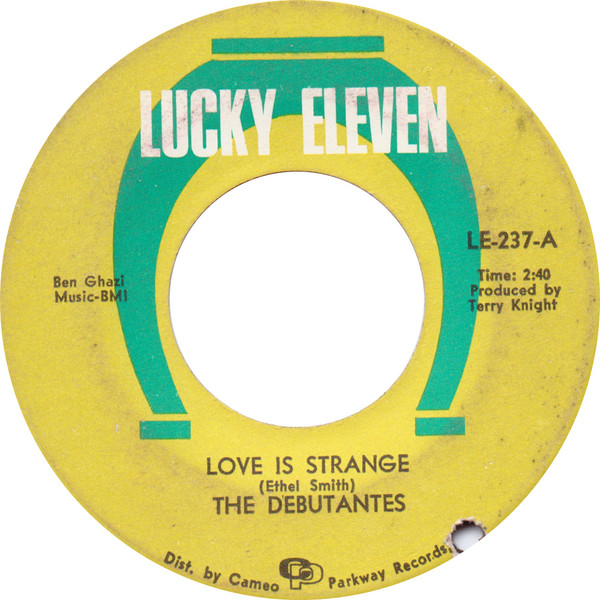
Another one of Michigan’s all-female garage acts, The Debutantes hailed from Detroit, and released just one single prior to disbanding; their entire recorded output has since been anthologized by BeatRocket. Their lone A-side is an appealing cover of Mickey & Silvia’s 1956 classic, “Love is Strange” – done up in an organ-heavy arrangement with playful backing vocals.

Our lone representative from the Upper Peninsula, The Fastells hailed from the town of Negaunee. The A-side to their only single, “So Much” trades in the ethereal, atmospheric sound that only a select few garage bands could pull off. Its melancholic (and slightly haunting) nature made it a natural fit for the Numero Group’s 2020 compilation, Louis Wayne Moody High.
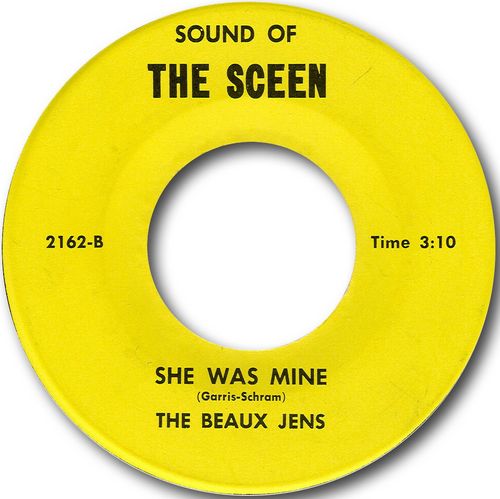
Yet another one-single-wonder, Grand Ledge’s The Beaux Jens struck gold with their lone A-side, “She Was Mine.” Its warbling organ, insistent backing vocals, and spooky atmosphere have made it an obvious favorite of garage aficionados, as it’s appeared on Back From the Grave, Boulders, and several other regional proto-punk compilations.
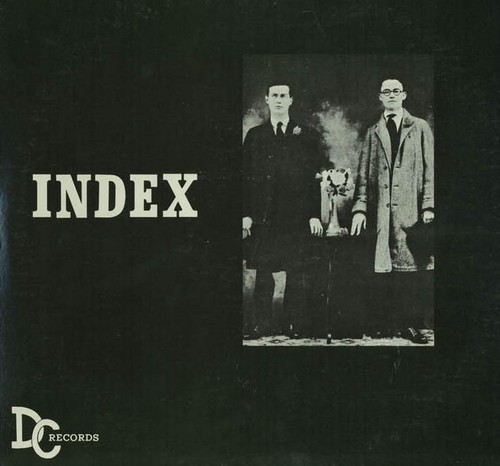
One of the most legendary American garage bands, Grosse Pointe’s Index had both a sound and a visual aesthetic that seemed to anticipate the post-punk scene – despite existing in a decidedly proto-punk era. There is a haunting distance to the band’s self-recorded material – released across two albums in the late-sixties, and a handful of more recent compilations – and while their “vibe” may lead some to believe that Index represent a triumph of style over substance, the stirring “Fire Eyes” should be enough to dispel such a notion.
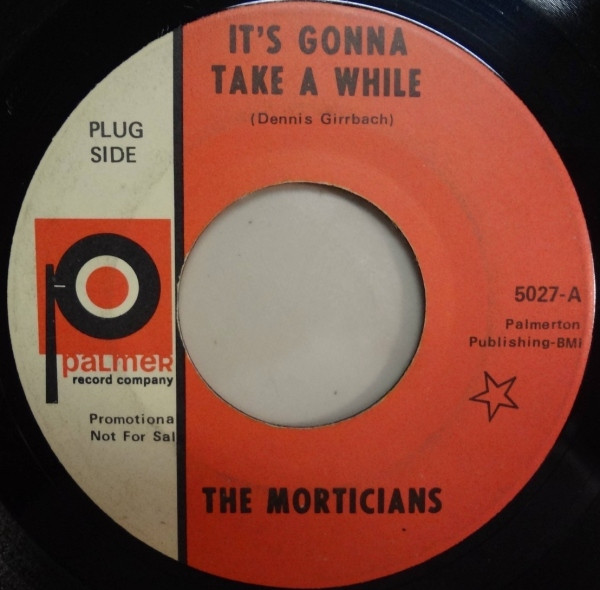
From River Rouge, The Morticians are yet another example of a great Michigan one-off single. “It’s Gonna Take a While” was released by the Palmer Record Company in 1967, and despite its failure to make much of an impact outside of the local scene, there’s a vibrancy to the track that easily outclasses most of the region’s plethora of garage rock competitors.
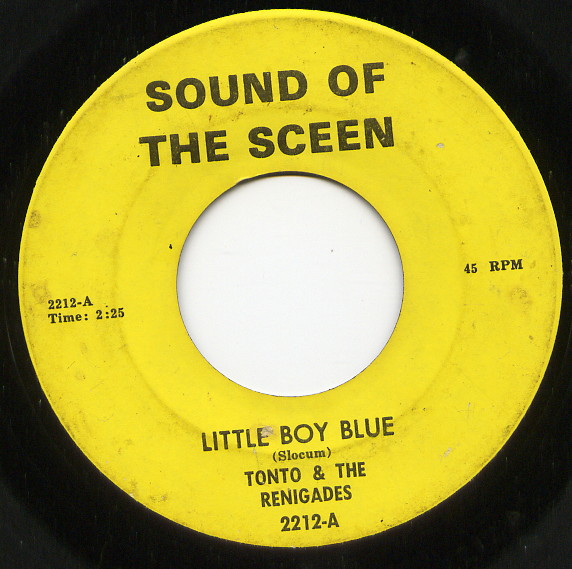
Grand Ledge makes its second appearance with this buzzing track from Tonto and The Renegades. The two singles released by the group made them downright prolific by garage rock standards, and of their four songs, “Little Boy Blue” stands as the most impressive showcase of their collective performance and compositional skills.
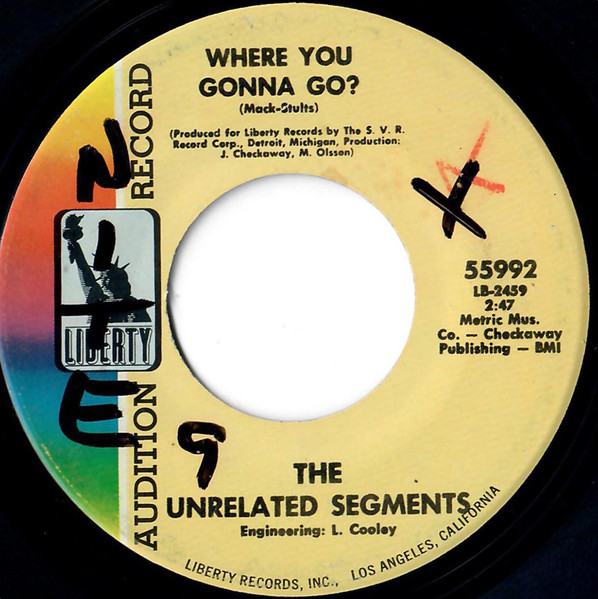
There’s a decidedly “cleaner” sound on this 1967 single from Detroit’s The Unrelated Segments – unsurprising, as it was released on the Los Angeles-based Liberty Records. The Segments never broke through to a widespread audience, but their singles have been scattered across a series of garage compilations – including the expanded 1998 edition of Nuggets.
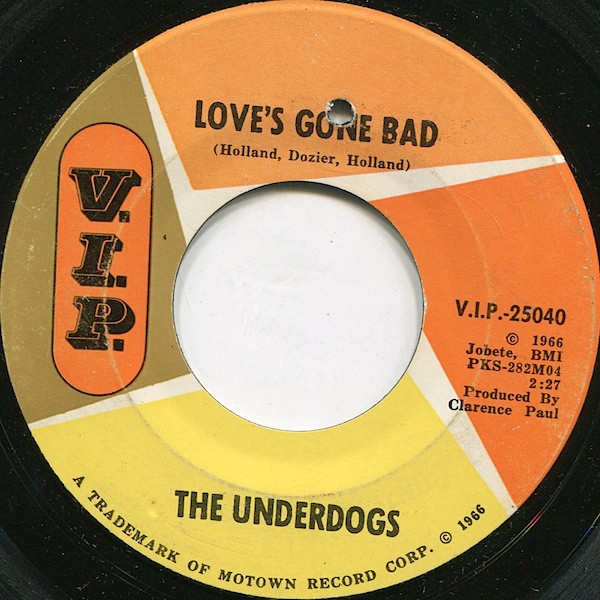
Another Grosse Pointe group, The Underdogs displayed a more polished sound on “Love’s Gone Bad.” As a cover of a Motown song, that sense of professionalism shouldn’t be unexpected, but there’s enough of a gritty undercurrent to this track to keep it firmly in the garage rock camp.
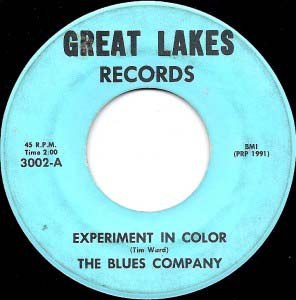
While its title and phased guitar seem to promise a psychedelic excursion, those elements are relatively tame on The Blues Company’s 1968 single, “Experiment in Color.” Instead, its vibrant bass line and fuzz guitar layers place it on the more soulful end of the garage rock spectrum.
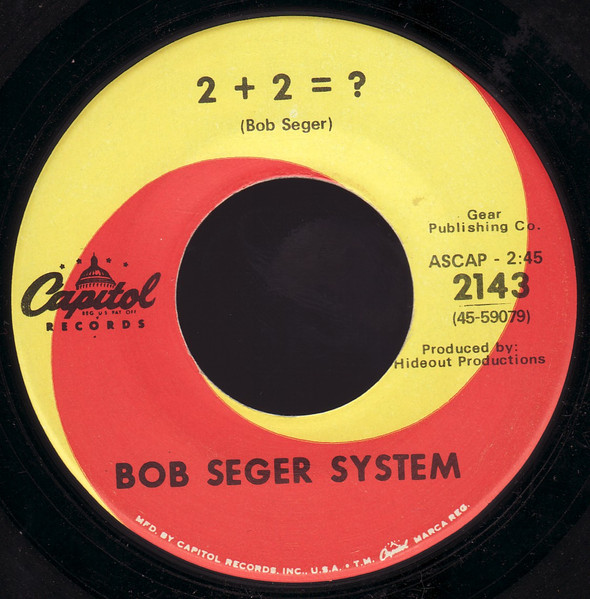
Yes, this is the same Bob Seger who would soon start cranking out harmless AM radio fodder with startling regularity – and eventually absolute dreck, like “Old Time Rock & Roll.” However, close to the outset of his career, Seger unleashed this furious, stirring, and ass-kicking anti-war rant – released in the very same month that the war in Vietnam began to appear increasingly un-winnable (and thus, decreasingly justifiable) to a much wider portion of the American population.
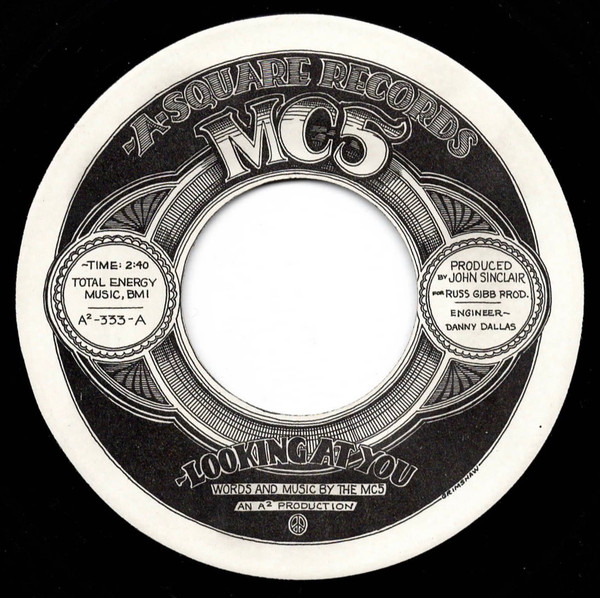
There are few bands whose arrival signals something entirely new on the rock scene. For many listeners, Detroit’s MC5 (Motor City Five) were one such group. Bringing a noise and aggression that few of their predecessors had even hinted at, MC5 seemed to up the ante for garage, proto-punk, or whatever one might’ve called it at the time. Few bands covered in this set of fifteen features would have as seismic of an impact as this one.
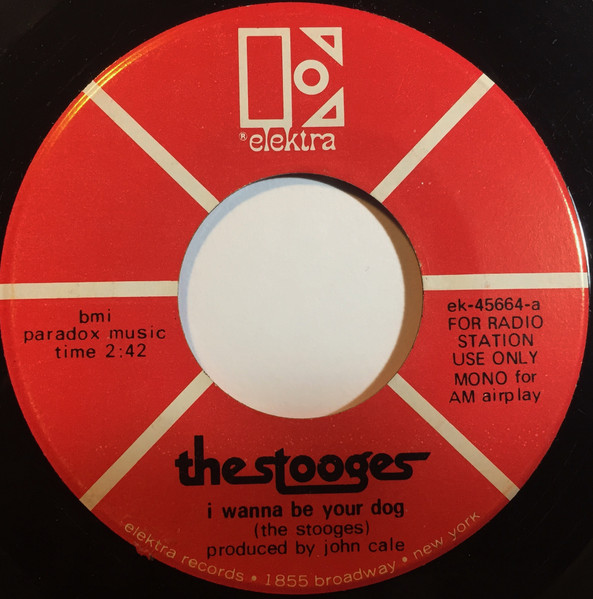
…And here is one of those few. As the scope of this project came into clearer focus, there was one song that seemed to be an appropriate ending point for our survey of American garage rock. It’s kind of hard to articulate exactly why “I Wanna Be Your Dog” makes sense as the opposite bookend to “Louie Louie,” but I’ll give it a shot. “Louie Louie” represented the arrival of garage in the mainstream. Nothing anywhere near as shambolic had ever made it to the upper reaches of the American charts before, and its acceptance served as a signal to ambitious-but-technically-limited musicians that success was not as far out of reach as it might have seemed before. After half-a-decade of garage rock’s further dalliances with mainstream acceptance, “I Wanna Be Your Dog” takes a torch to traditional notions of success and ambition, and, in three minutes of nihilistic, sneering rage, says, “fuck it, we’re doing things differently now.” It’s impact wasn’t immediately felt en masse, but it began to worm its way into unsuspecting corners, both across America and beyond. It wasn’t pretty, but it wasn’t supposed to be. It wasn’t proto-punk. It was punk.



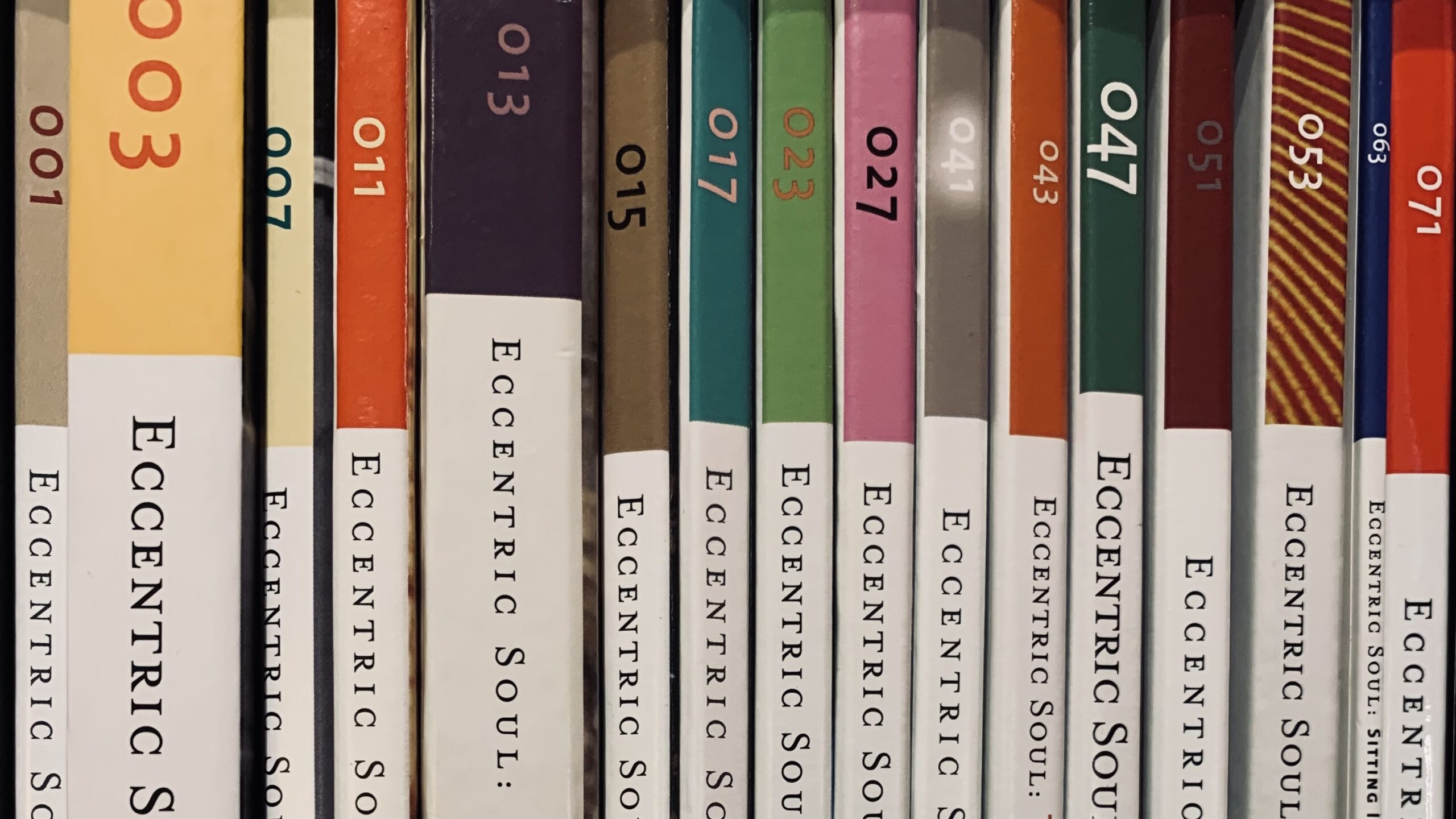

it might be of note that: Bob Seger, The Rationals, The Stooges all went to the same high school, Pioneer High School in Ann Arbor during the early years of the 60s… notable musical alumi from Ann Arbor area high schools in the 60s include, the Miller brother who would form Mission of Burma, Deniz ‘Iceman’ Tek who would form Radio Birdman and Bill Kirchen of Commander Cody and His Lost Planet Airmen.